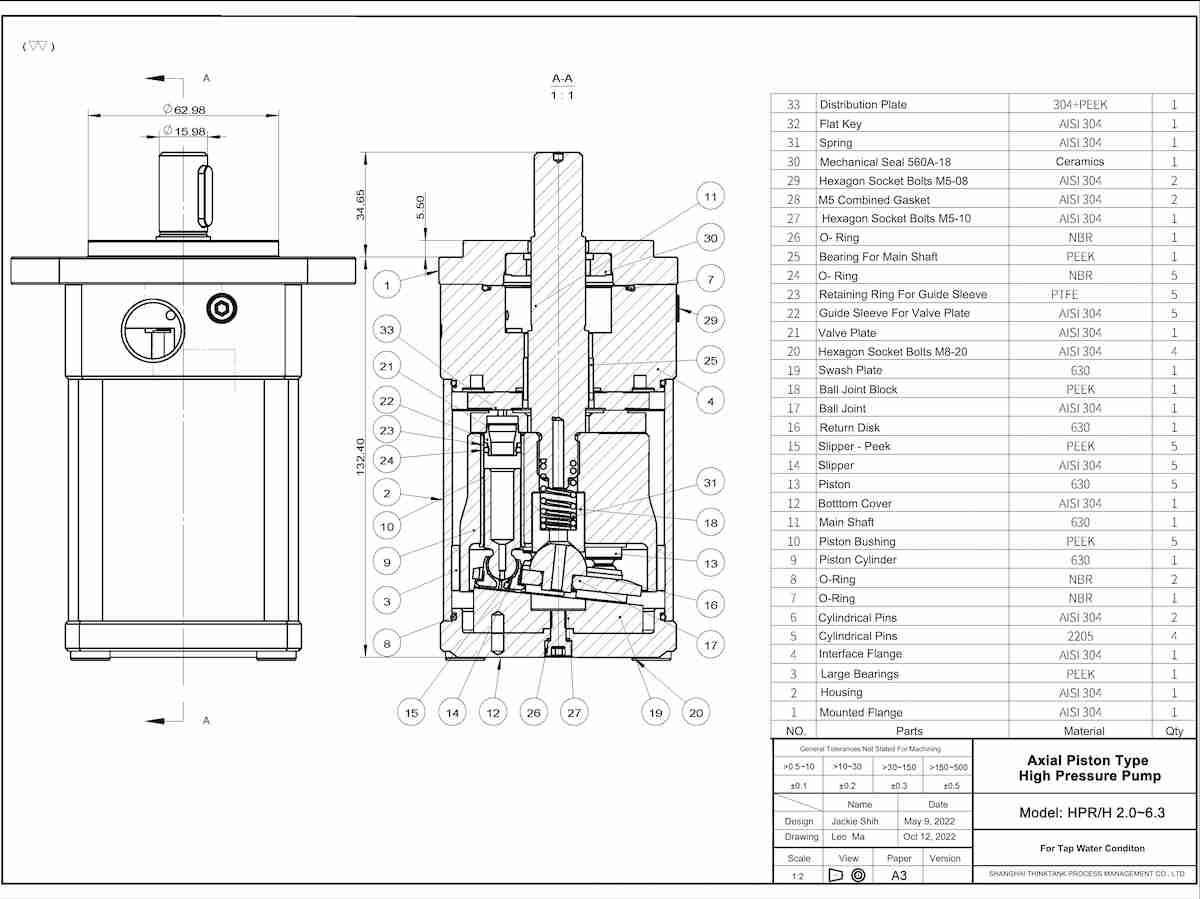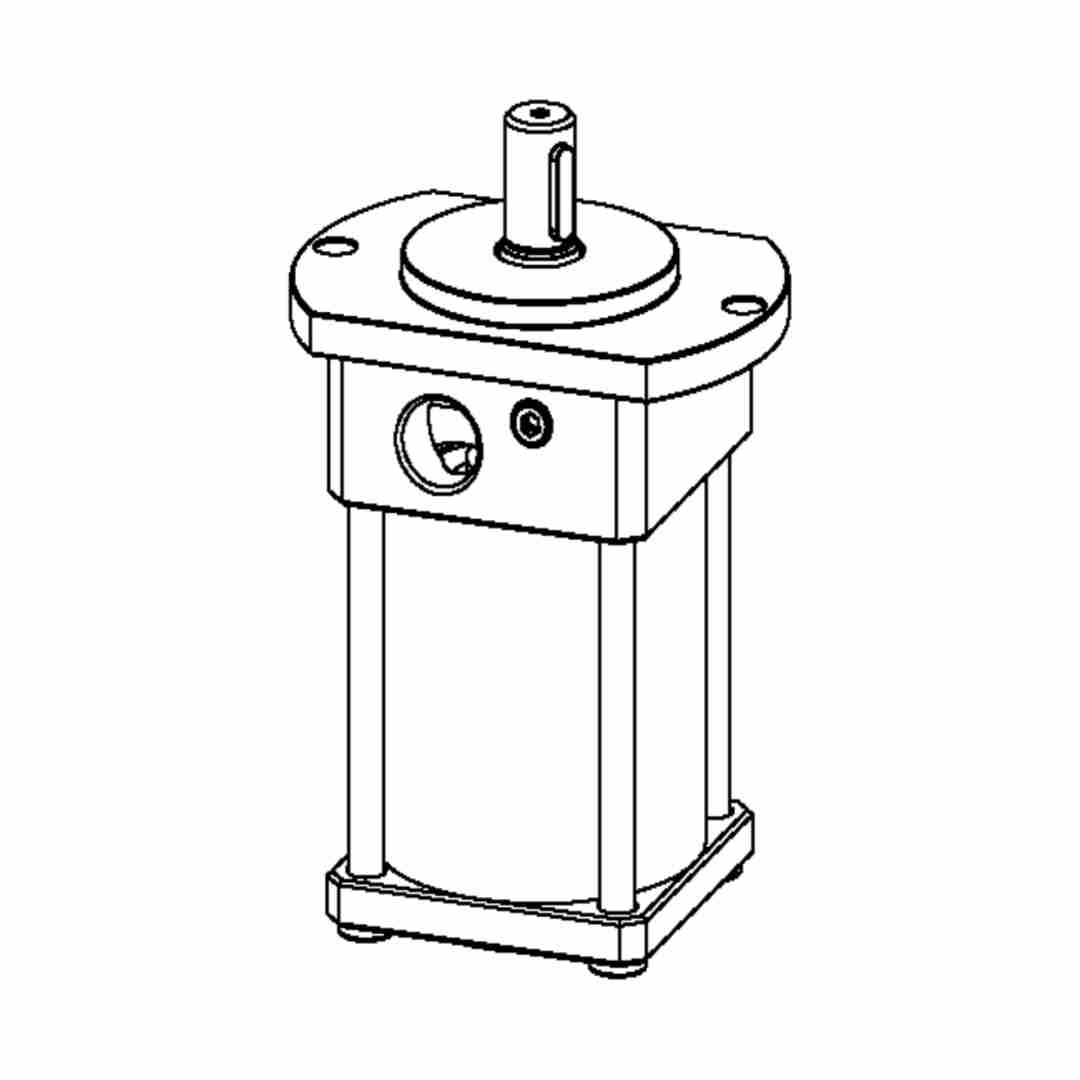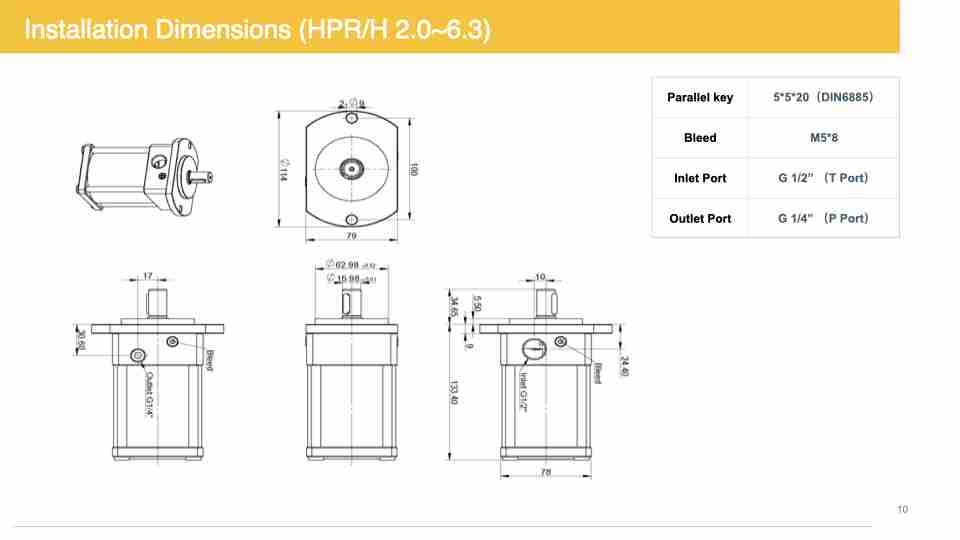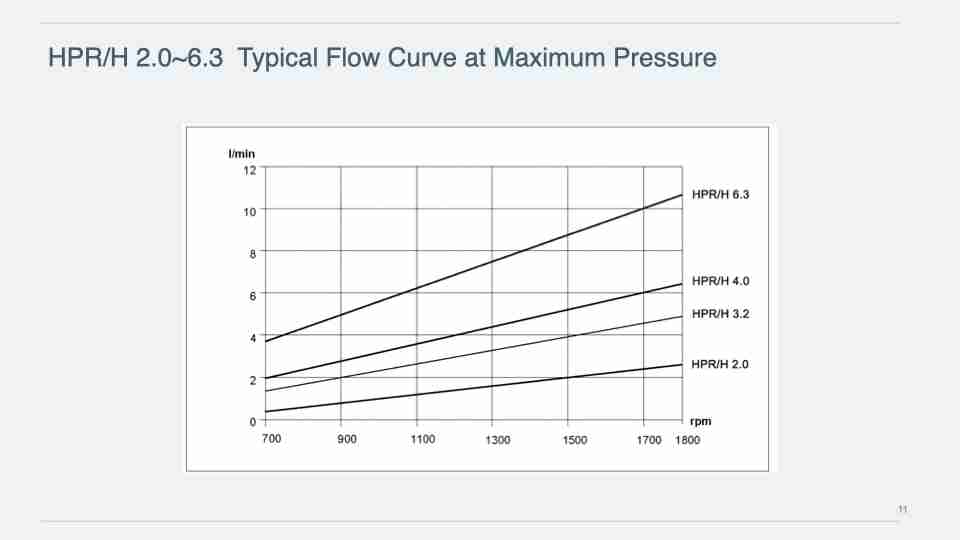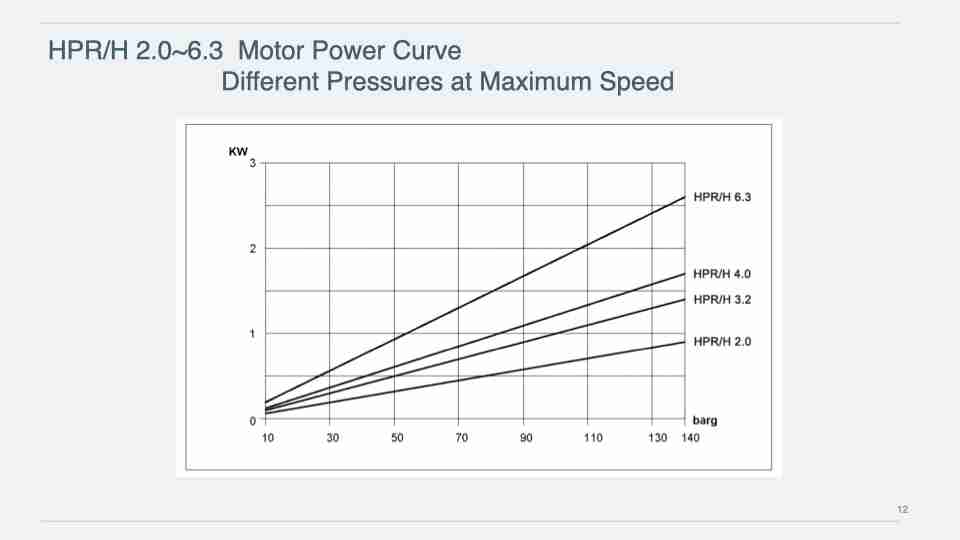Description
Design and Usage
HPR/H 2.0~6.3 pumps are designed with two ports and are primarily used in pump group systems. These pumps are not self-priming, meaning the inlet pressure must always remain positive to avoid permanent pump damage.
To ensure proper operation, the simplest method is to detach the pump’s inlet pipe and measure the flow. When the water tank’s liquid level is at its lowest, the water supply flow must exceed the pump’s delivery flow by at least 20% to maintain positive inlet pressure during operation.
Installation Recommendations
- Avoid installing a filter between the pump and the water tank in direct water supply setups unless a pressure switch is included on the inlet pipe to prevent negative pressure at the pump inlet.
- The inlet pressure of the water mist pump must always remain positive to ensure reliable performance.
Electric Pump Set
The pump is connected to the B5 motor flange using a standard bell housing and coupling. It is crucial that no axial or radial loads are applied to the pump’s output shaft. Gear couplings are recommended to minimize stress and enhance durability.
Operating Temperature
HPR/H 2.0~6.3 pumps are suitable for operation in a temperature range of 2℃ to 50℃ for optimal performance.
- For sub-freezing temperatures, environmentally safe antifreeze must be used.
- Operation above 50℃ is possible; however, it may reduce volumetric efficiency. If higher temperatures are required, the maximum operating temperature must be specified when ordering.
Filtration
All water entering the pump must be pre-filtered with a nominal rating of 10 μm (absolute rating of 25 μm).
- In closed-loop systems, backflow filtration is permissible.
- High-pressure filtration is an alternative but is generally a more expensive option.
Fluid Compatibility
The standard configuration is designed for use with drinking water and industrial water, such as distilled water, reverse osmosis water, or demineralized water. Depending on the operating environment, modifications to sealing materials or structures may be necessary.
For seawater applications, the standard construction can be used; however, the increased corrosive potential of seawater may necessitate the use of higher-quality materials for extended operation and durability.
| Pumps Model | 2.0 | 3.2 | 4.0 | 6.3 |
| Displacement (cc/rev) | 2 | 3.2 | 4 | 6.3 |
| Housing Material | ASTM 304 / ASTM 316L | ASTM 304 / ASTM 316L | ASTM 304 / ASTM 316L | ASTM 304 / ASTM 316L |
| Min. Outlet Pressure(barg) | 30 | 30 | 30 | 30 |
| Max. Outlet Pressure(barg) | 140 | 140 | 140 | 140 |
| Inlet Pressure,Continuous(barg) | 0-4 | 0-4 | 0-4 | 0-4 |
| Min. Speed,Continuous (rpm) | 700 | 700 | 700 | 700 |
| Max. Speed (rpm) | 1800 | 1800 | 1800 | 1800 |
| Flow Rate (L/min) (14Mpa,700 rpm) | 0.3 | 1.3 | 1.9 | 3.7 |
| Flow Rate (L/min) (14Mpa,1000 rpm) | 1.0 | 2.3 | 3.2 | 5.6 |
| Flow Rate (L/min) (14Mpa,1200 rpm) | 1.5 | 2.9 | 3.7 | 6.8 |
| Flow Rate (L/min) (14Mpa,1500 rpm) | 2.0 | 3.9 | 5.2 | 8.7 |
| Flow Rate (L/min) (14Mpa,1800 rpm) | 2.6 | 4.9 | 6.4 | 10.5 |
| Power Consumption (KW) (14Mpa,1500 rpm) | 0.9 | 1.4 | 1.7 | 2.6 |
| Min. Media Temperature (°C) | 2 | 2 | 2 | 2 |
| Max. Media Temperature(°C) | 50 | 50 | 50 | 50 |
| Sound Pressure Level (dB) * | 76 | 76 | 76 | 76 |
| Weight (kg) | 4.5 | 4.5 | 4.5 | 4.5 |
| Integrated Flush Valve | NO | NO | NO | NO |
